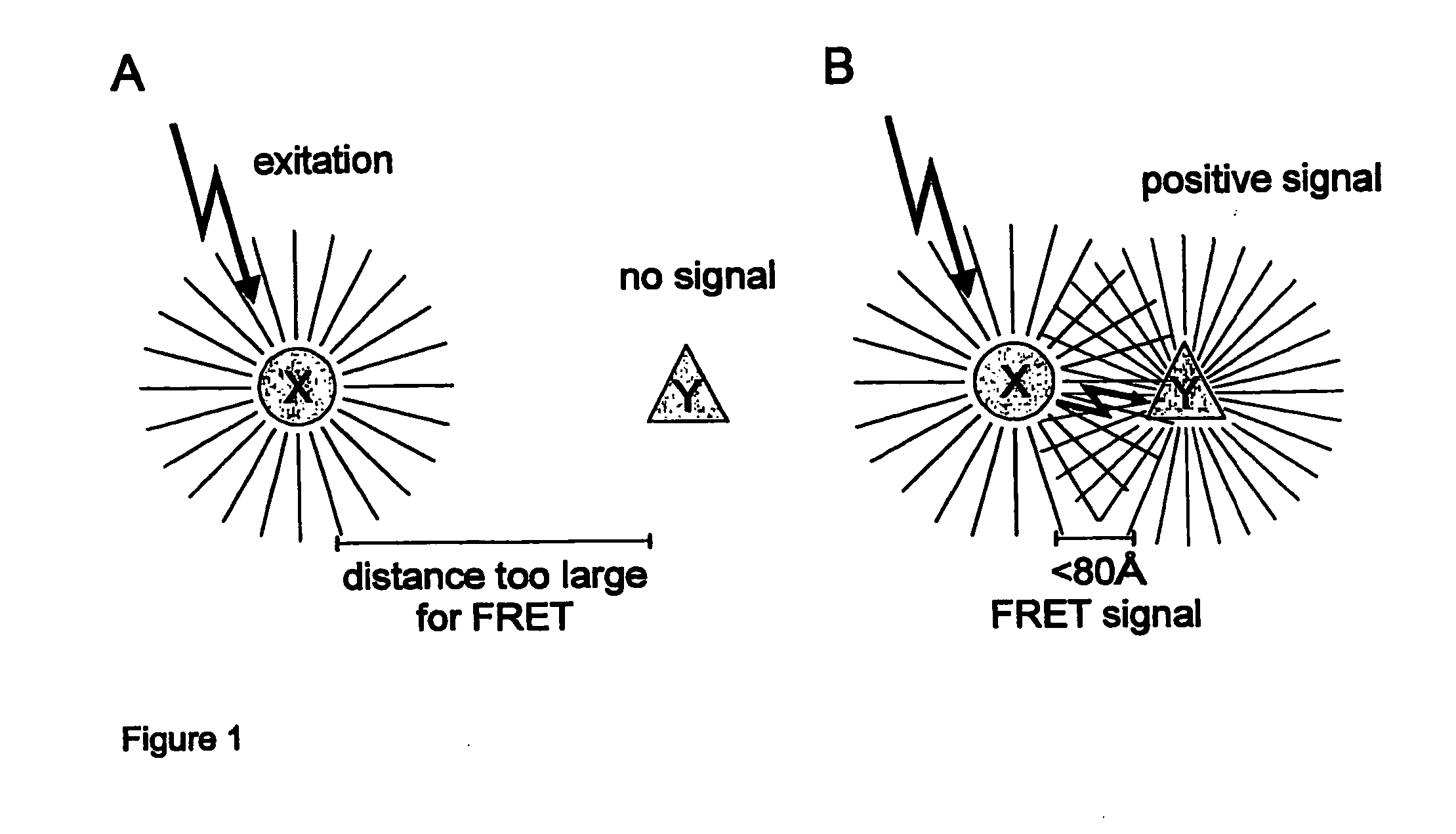FRET probes and methods for detecting interacting molecules
a technology of interacting molecules and probes, applied in the field of biotechnology, can solve the problems of time-consuming, needs experience and only evaluation, and is not suitable for detecting distinct interacting molecules, and achieve the effect of increasing the likelihood of energy transfer
- Summary
- Abstract
- Description
- Claims
- Application Information
AI Technical Summary
Benefits of technology
Problems solved by technology
Method used
Image
Examples
examples
Probe Set Preparation.
[0053] Methods of producing an antibody are known to those skilled in the art, e.g. using hybridoma technology or phage display. To obtain a polyclonal antibody, a laboratory animal is immunized with an immunogen such as a recombinant protein or a synthetic peptide. The animal's immune response is monitored by taking test bleeds and determining the titer of the reactivity. When appropriately high titers are obtained, blood is collected from the animal and antisera are prepared. Further fractionation of the antisera to enrich for antibodies reactive to the protein can be done if desired. See e.g. Harlow et al. Antibodies. A Laboratory Manual, Cold Spring Harbor Publications, New York (1988). Monoclonal antibodies can be obtained by various techniques familiar to those skilled in the art. Antibodies obtained can be characterized conventional immunodiagnostic techniques e.g. by Western blotting using lysates of cells expressing a recombinant fusion protein or by...
PUM
| Property | Measurement | Unit |
|---|---|---|
| length | aaaaa | aaaaa |
| length | aaaaa | aaaaa |
| molecular weight | aaaaa | aaaaa |
Abstract
Description
Claims
Application Information
 Login to View More
Login to View More - R&D
- Intellectual Property
- Life Sciences
- Materials
- Tech Scout
- Unparalleled Data Quality
- Higher Quality Content
- 60% Fewer Hallucinations
Browse by: Latest US Patents, China's latest patents, Technical Efficacy Thesaurus, Application Domain, Technology Topic, Popular Technical Reports.
© 2025 PatSnap. All rights reserved.Legal|Privacy policy|Modern Slavery Act Transparency Statement|Sitemap|About US| Contact US: help@patsnap.com


